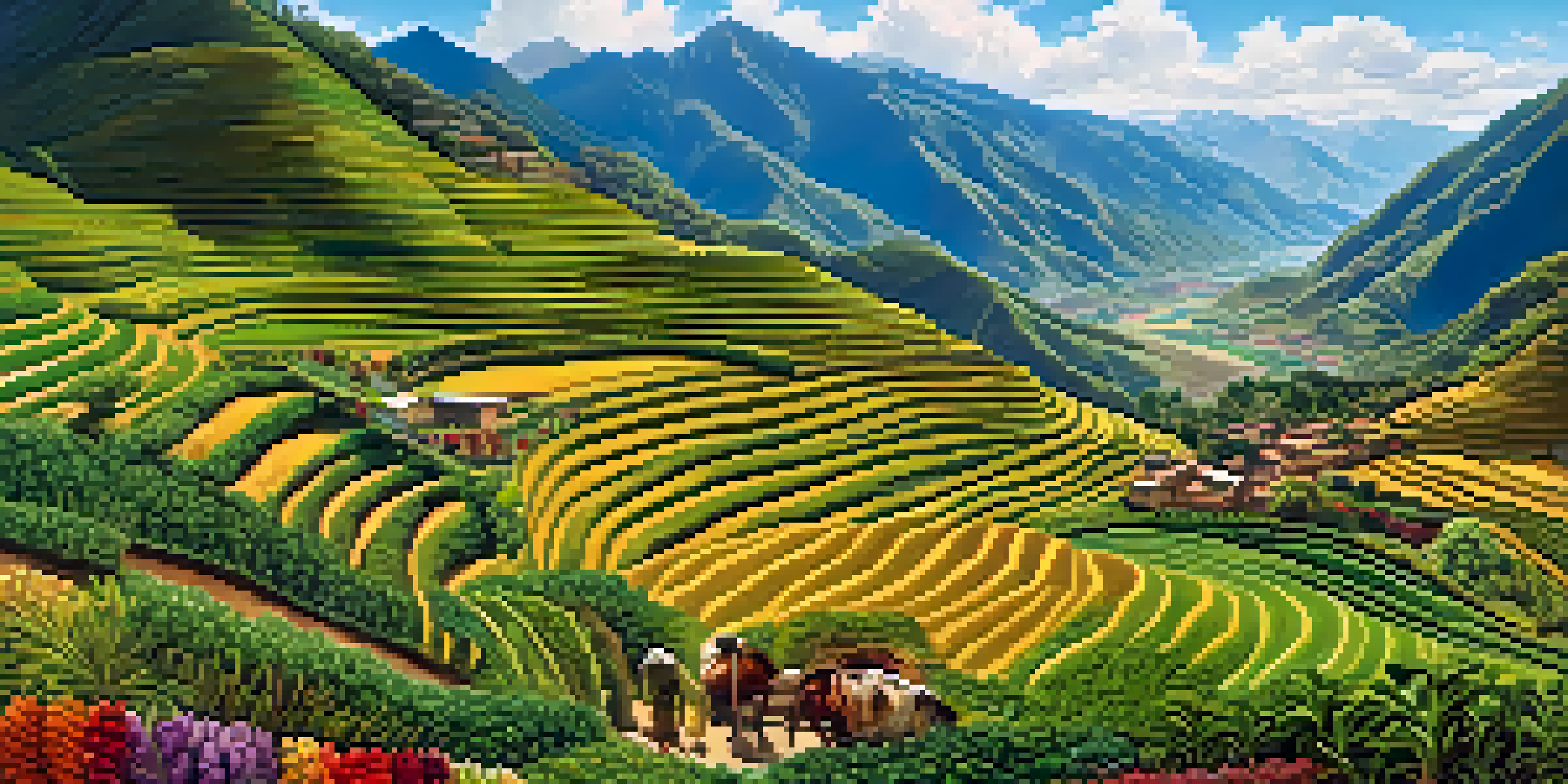Key Exports: Understanding Peru's Economic Contributions

Introduction to Peru's Economic Landscape and Exports
Peru's economy is a vibrant tapestry woven from various industries, with exports playing a crucial role. As one of the fastest-growing economies in Latin America, understanding its export dynamics is essential. These exports not only bolster the national economy but also connect Peru to global markets, enhancing its international standing.
Mineral Exports: The Backbone of Peru's Economy
Minerals, particularly copper and gold, are at the heart of Peru's export economy. In fact, Peru is among the top producers of copper, significantly contributing to its GDP. This reliance on mineral resources has led to economic booms, but it also raises questions about sustainability and economic diversification.
Minerals Drive Peru's Economy
Copper and gold exports are vital to Peru's economic growth, contributing significantly to its GDP.
Agricultural Exports: A Taste of Peru's Rich Biodiversity
Peru's agricultural sector is equally impressive, with exports like avocados, grapes, and quinoa gaining global popularity. This sector showcases Peru's rich biodiversity, making it a key player in the global food market. Additionally, the focus on organic farming has positioned Peru as a leader in sustainable agriculture, appealing to health-conscious consumers worldwide.
Fishing Industry: A Deep Dive into Peru's Seafood Exports
The fishing industry is another pillar of Peru's economy, particularly its anchovy exports. Peru is one of the largest exporters of fishmeal, essential for animal feed and aquaculture. However, overfishing poses significant challenges, prompting the need for sustainable practices to ensure the longevity of this vital industry.
Agriculture Showcases Biodiversity
Peru's agricultural exports, including avocados and quinoa, highlight its rich biodiversity and commitment to sustainable farming.
Textiles and Clothing: Weaving Tradition into Modern Exports
Peru's textile and clothing industry combines traditional craftsmanship with modern design. Exports in this sector include high-quality alpaca wool products, which are highly sought after in international markets. This blend of tradition and innovation not only supports local artisans but also enhances Peru's cultural heritage on a global scale.
Challenges Faced by Peru's Export Sectors
While Peru's export sectors thrive, they also face several challenges, including fluctuating commodity prices and environmental concerns. The reliance on minerals makes the economy vulnerable to global market changes. Additionally, issues like climate change and resource management require immediate attention to ensure future sustainability.
Trade Agreements Enhance Exports
Participation in trade agreements with countries like the U.S. and China has opened new markets and fostered economic growth for Peru.
The Role of Trade Agreements in Boosting Exports
Peru's participation in various trade agreements has significantly boosted its export potential. Agreements with countries like the United States and China have opened new markets for Peruvian goods. These partnerships not only facilitate trade but also foster economic growth and development through increased foreign investment.
Looking Ahead: The Future of Peru's Exports
As Peru navigates the complexities of the global market, the future of its exports looks promising yet challenging. Emphasizing sustainability and diversification will be key to maintaining growth. With a focus on innovation and responsible practices, Peru can continue to enhance its economic contributions on the world stage.